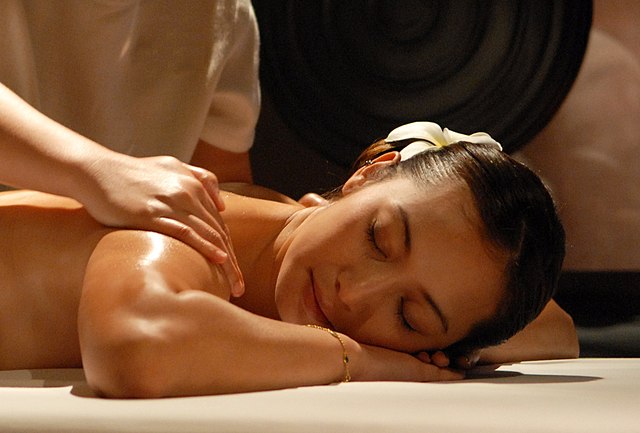Massage is not only beneficial for humans but also for our furry friends. Dogs can benefit from regular massages as it helps improve their overall well-being and can provide relief from various conditions. In this article, we will explore the art of dog massage and learn how to give your canine companion a relaxing and therapeutic massage in the comfort of your own home.
Understanding Dog Massage
Dog massage is a gentle and therapeutic practice that involves manipulating the muscles and soft tissues of a dog’s body. It is based on the same principles as human massage, promoting relaxation, stress relief, improved circulation, and enhanced joint mobility. Dog massage can also help alleviate muscle tension, reduce pain, and improve overall flexibility.
Benefits of Dog Massage
Regular massage sessions for your dog can have numerous benefits. Some of the key advantages of dog massage include:
- Relaxation and stress relief: Massage helps calm anxious dogs and promotes a sense of relaxation.
- Improved circulation: Massage stimulates blood flow, delivering oxygen and nutrients to the muscles and organs.
- Enhanced joint mobility: Massage can improve flexibility and range of motion in your dog’s joints.
- Pain relief: Massaging sore or tense muscles can help alleviate pain and discomfort.
- Bonding and trust-building: Massage creates a deep bond between you and your dog, strengthening your relationship.
- Pre- and post-exercise warm-up: Massage can prepare your dog’s muscles before physical activity and aid in post-workout recovery.
Preparing for the Massage
Before starting a dog massage session, it is important to create a calm and comfortable environment. Follow these steps to prepare for a successful massage:
- Choose a quiet and peaceful area: Find a quiet room or a secluded spot where you and your dog can relax without distractions.
- Gather the necessary supplies: Get a soft blanket or mat for your dog to lie on during the massage. Have some treats nearby as rewards for good behavior.
- Calm yourself: Dogs are highly intuitive and can sense your emotions. Take a few deep breaths and calm yourself before beginning the massage.
Techniques for Dog Massage
When massaging your dog, it’s essential to use gentle and soothing techniques. Here are some effective massage techniques to try:
- Effleurage: This technique involves long, sweeping strokes with gentle pressure, starting from the neck and moving towards the tail.
- Petrissage: Use kneading motions with your hands to gently squeeze and lift the muscles. This technique can help release tension.
- Circular motions: Use your fingertips to make small circular motions on specific areas, such as the shoulders or hips, to promote relaxation.
- Stretching: Gently stretch your dog’s limbs by extending and flexing them. Be careful not to apply too much force.
Massage Strokes
It’s important to vary your strokes during the massage to provide a comprehensive experience. Use a combination of the following strokes:
- Long, sweeping strokes: Glide your hands along the length of your dog’s body, from head to tail.
- Circular strokes: Make circular motions on specific areas, focusing on muscle groups that may be tense or sore.
- Kneading strokes: Gently knead the muscles using your fingertips or the palm of your hand. This technique can help release tension and knots.
- Gentle pressure: Apply light pressure on sensitive areas and gradually increase it if your dog seems comfortable.
Areas to Focus On
When massaging your dog, pay attention to these key areas:
- Neck and shoulders: Dogs often carry tension in these areas. Use gentle strokes and circular motions to alleviate any discomfort.
- Back and spine: Massage along the spine using long, sweeping strokes. Be cautious around the tail area, as some dogs may be sensitive there.
- Hips and hind legs: Pay extra attention to these areas, as they can benefit from massage, especially in older dogs or those with joint issues.
- Paws and legs: Massage each leg, paying attention to the paw pads and in between the toes. This can be particularly soothing for active dogs.
Signs of Discomfort
While massaging your dog, it’s important to observe their body language and reactions. Look for signs of discomfort, such as:
- Flinching or tensing: If your dog flinches or tenses up during a particular stroke or in a specific area, adjust your technique or move on to another area.
- Growling or snapping: If your dog displays aggressive behavior during the massage, stop immediately and consult a professional dog masseuse or veterinarian.
- Licking or yawning excessively: These can be signs of stress or discomfort. Take a break and reassess your approach.
Creating a Relaxing Environment
To create a soothing environment during the massage, consider the following tips:
- Play calming music: Soft, instrumental music can help relax both you and your dog during the massage.
- Use aromatherapy: Some dogs respond well to calming scents like lavender or chamomile. However, make sure to use pet-safe essential oils diluted appropriately.
- Dim the lights: Dimming the lights can create a tranquil atmosphere and help your dog feel more relaxed.
Frequency and Duration
The frequency and duration of dog massages may vary depending on your dog’s age, health, and individual needs. Start with shorter sessions of around 10-15 minutes and gradually increase the duration as your dog becomes more comfortable. Aim for at least one massage session per week to maintain the benefits.
Professional Dog Massage
If you are unsure about massaging your dog yourself or if your dog has specific health issues, consider seeking the assistance of a professional dog masseuse. They are trained in various techniques and can tailor the massage to suit your dog’s specific needs.
Safety Precautions
When massaging your dog, keep the following safety precautions in mind:
- Avoid sensitive areas: Stay away from wounds, surgical incisions, or any painful or inflamed areas.
- Watch for allergies: If you decide to use massage oils, make sure they are safe for dogs and do a patch test first to ensure there are no adverse reactions.
- Consult your vet: If your dog has any underlying health conditions or if you are unsure about any aspect of dog massage, consult your veterinarian before starting.
Massaging your dog can be an excellent way to bond with them while providing numerous physical and emotional benefits. Following the techniques and guidelines outlined in this article can give your furry friend a relaxing and enjoyable massage experience at home.
FAQs
-
How often should I massage my dog?
- Answer: It is recommended to massage your dog at least once a week, but you can increase the frequency if your dog enjoys it.
-
Can I use any massage oil on my dog?
- Answer: It’s best to use pet-safe massage oils or consult your veterinarian for recommendations to avoid any potential allergic reactions.
-
What if my dog doesn’t like being massaged?
- Answer: Not all dogs may enjoy massage initially. Start slowly and observe their reactions. If your dog shows discomfort or resistance, consult a professional dog masseuse.
-
Can I massage my dog after a meal?
- Answer: It’s best to wait at least an hour after your dog has eaten before giving them a massage to avoid any potential discomfort.
-
Are there any breeds that should not be massaged?
- Answer: Most dog breeds can benefit from massage. However, if your dog has any specific health conditions, it’s advisable to consult your veterinarian before starting a massage routine.




This blog post is a fantastic resource. The amount of research and thought you’ve put into it is evident. Thank you for sharing your insights and expertise.
https://clients1.google.co.ve/url?q=https%3A%2F%2Flasvegasescortsgirl.com